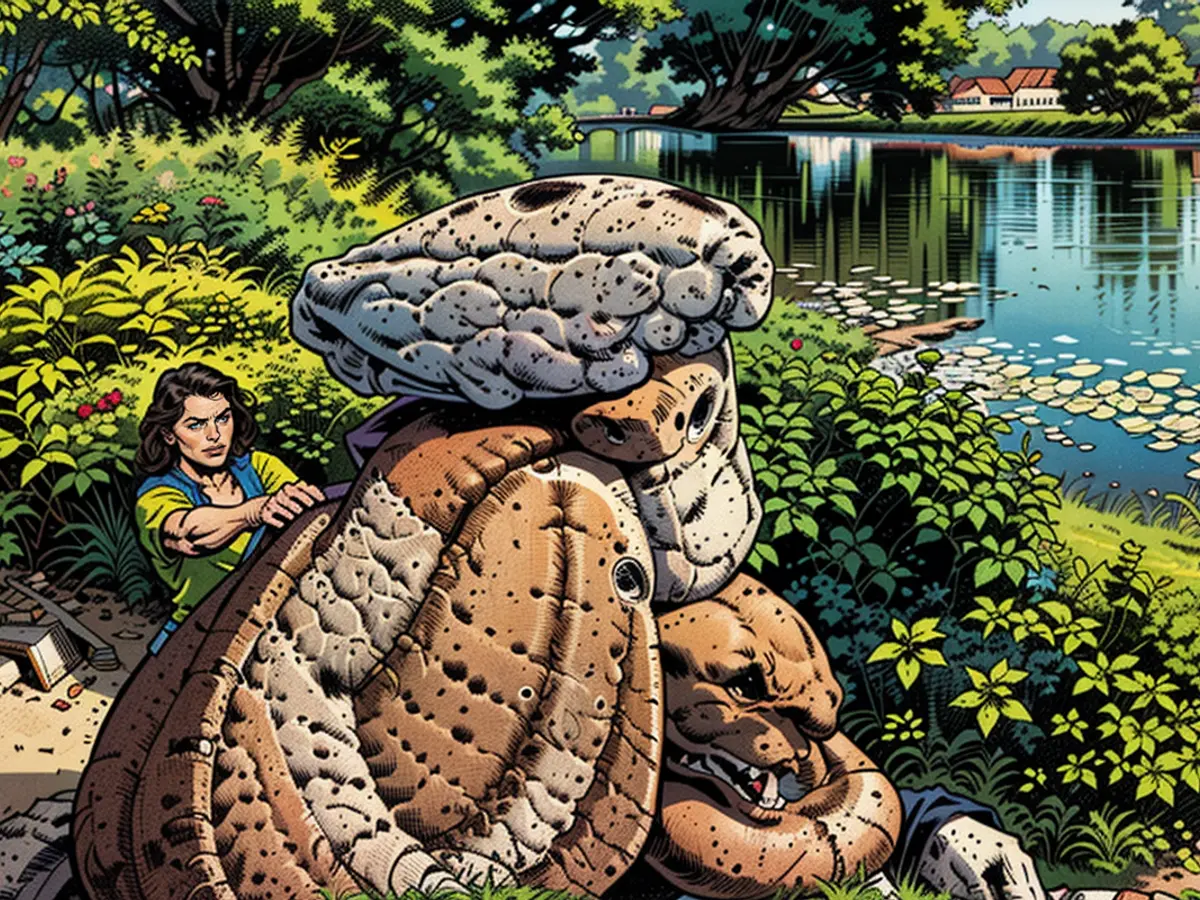- Hidden historical landmarks uncovered in Wörlitzer Park.
Explorers stumbled upon a variety of burial mounds and long barrows within Wörlitzer Park, situated in Wittenberg's district. According to archaeologist Franziska Knoll from the Halle's State Office for Heritage Management and Archaeology, these sites seemingly emerged quite recently, around the 1800s. "These miniature replicas were incorporated as historically embellished features within the park and appear to have been primarily utilized as a theatrical backdrop by Prince Franz," shared Knoll.
These structures later vanished into obscurity, becoming engulfed by vegetation. Archaeologists recognized peculiar mounds hidden within the park three years ago during an exploration. "Although heavily concealed by bush and tree growth, a long barrow was discernible near the volcanic island of Stein," revealed Knoll. "These elongated burial sites with stone borders are familiar to the surrounding area and can be traced back to the late Neolithic era, often containing multiple graves."
Grave-as-ornament
Following years of documentation, geophysical mapping, and an excavation in March of this year, it became clear: The monument was erected during the lifetime of Prince Leopold III. Friedrich Franz von Anhalt-Dessau (1740-1817). "Surprisingly, it was devoid of involved remains. Instead, it stood as a regional landmark, symbolizing the antiquities of the area," informed Knoll.
"The long barrow was reconstructed upon completion and remains in its original state, as it did during the prince's time, outside the volcanic island of Stein." Furthermore, scientists unveiled four additional artificial burial mounds in the park. "We practiced landscape archaeology in the landscape garden," stated Knoll.
The birth of local archaeology in Saxony-Anhalt
Authentic megalithic structures and burial mounds can also be found in Anhalt's region, and were acknowledged by Prince Franz. "It's undeniable that some smaller burial mounds from the late Bronze Age and early Iron Age were displaced during the park's construction in the 18th century," explained Knoll. "Some of the ornate urns discovered there, dating back approximately 3,000 years, are still exhibited today as replicas in the Roman Columbarium of the volcanic island of Stein. The primary artifacts have since perished, with only a few surviving into the 20th century at the Köthen museum."
"In essence, one could argue that this marked the true beginning of regional archaeology," stated official archaeologist Harald Meller. "The conflation of classical antiquity and local prehistory is an unprecedented, significant discovery." The prince assembled his own realm and dynasty through the park, incorporating figures from classical antiquity alongside local, anonymous burials.
Wörlitzer Park continues to conceal secrets
Wörlitzer Park forms part of the Dessau-Wörlitz Garden Realm, designated as a UNESCO World Heritage site. The architectural duplicates of classical antiquity can be admired along the Elbe, such as the Roman Pantheon, alongside a variety of other temples enhanced with original sculptures. These replicas were brought to the region through the mediation of Johann Joachim Winckelmann (1717-1768). The illusion culminated in a reproduction of the volcano Vesuvius, which had re-erupted just a few days prior.
Beyond the structures, the landscape itself underwent a comprehensive transformation in the 18th century. "The combination of artificial grottoes, ravines, sacred groves, hills with altars, statues, and even graves is unique," shared state archaeologist Meller. "Deciphering these intricate visual riddles poses a significant challenge and leaves ample space for continued exploration."
Future studies are being planned to excavate additional monuments during the forthcoming winter semester. The findings will be highlighted during the scientific annual conference of the Dessau-Woerlitz Commission, drawing delegates from August 22 to 24, 2024, in Woerlitz.
The long barrow, a monument from the late Neolithic era, was reconstructed and remains in its original state outside the volcanic island of Stein. The park, filled with historical embellishments, serves as a testament to the birth of local archaeology in Saxony-Anhalt, where authentic megalithic structures and burial mounds were acknowledged and incorporated.








